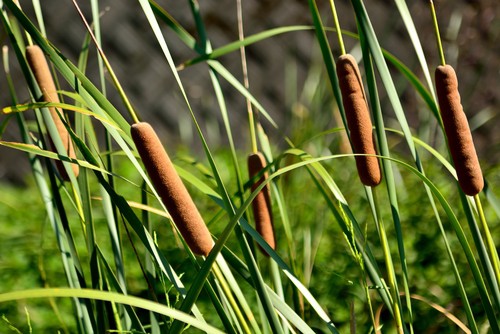Hot dog-looking plants are a unique and interesting addition to any garden or indoor plant collection. These plants are characterized by their cylindrical shape, which resembles a hot dog or sausage.
While there are several plants that look like hot dogs, the most common is the Senecio articulatus, also known as the candle plant or hot dog cactus.
Native to South Africa, the Senecio articulatus belongs to the Asteraceae family and is closely related to other plants such as ragwort and groundsel. It is a perennial and evergreen succulent that can grow up to 2 feet tall and 1 foot wide.
The plant’s cylindrical leaves are blue-green in color and can grow up to 6 inches long. In the summer, the candle plant produces small yellow flowers that bloom in clusters at the top of the stem.
Key Takeaways
- Hot dog-looking plants are characterized by their cylindrical shape, which resembles a hot dog or sausage.
- The most common hot dog-looking plant is the Senecio articulatus, also known as the candle plant or hot dog cactus.
- The Senecio articulatus is a perennial and evergreen succulent that can grow up to 2 feet tall and 1 foot wide.
Check out these other popular posts in this category:
- What are the Naked Seeded Plants Called?
- What Are the Plants That Look Like Corn Dogs?
- What Are the Tiny Orange Bugs on Plants?
Understanding Plants that Look Like Hot Dogs
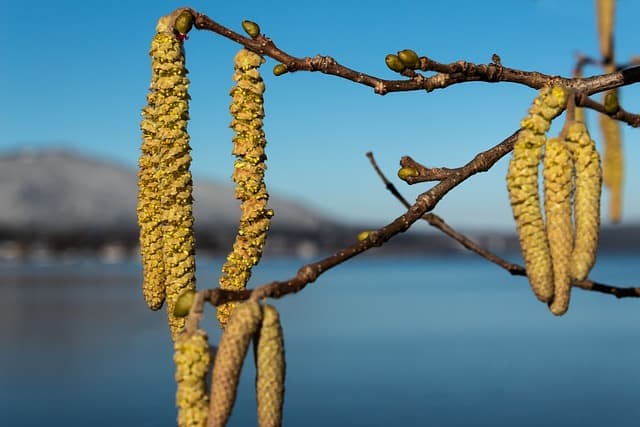
The ‘Hot Dog’ Looking Plant is a common name for several species of plants that resemble hot dogs or sausages due to their cylindrical shape. These plants are found in wetlands, marshes, and along waterways. They are popular among gardeners and plant enthusiasts due to their unique appearance and ease of care.
One of the most common ‘Hot Dog’ Looking Plants is the Cattail. Cattails are tall, slender plants that grow in marshes and along the edges of ponds and lakes. They have long, cylindrical flower spikes that resemble hot dogs or corn dogs. Cattails are also known as bulrushes, reedmace, or simply reeds.
There are several species of Cattails, including the Common Cattail (Typha latifolia), Narrowleaf Cattail (Typha angustifolia), and Southern Cattail (Typha domingensis). All of these species have similar cylindrical flower spikes that resemble hot dogs or corn dogs.
Cattails are important wetland plants that provide habitat for wildlife and help to filter pollutants from water. They are also used for food and medicine by many indigenous cultures.
Another ‘Hot Dog’ Looking Plant is the Candle Plant or Hot Dog Cactus (Senecio articulatus). This plant is a member of the Asteraceae family and is native to South Africa. It has cylindrical stems that resemble hot dogs or sausages and is popular among succulent enthusiasts.
Geographical Distribution
The Hot Dog Cactus, also known as Senecio articulatus, is a native plant of South Africa. It belongs to the Asteraceae family, which includes other plants such as Ragwort and Groundsel. This succulent plant is commonly called the Candle Plant or Hot Dog Cactus due to its cylindrical shape, which resembles a hot dog or candle.
The plant is now found in many parts of the world, including Asia and wetlands and freshwater marshes in the United States. It is a popular ornamental plant in many regions, especially in arid and semi-arid areas. Its unique shape and low maintenance requirements make it a favorite among gardeners and plant enthusiasts.
In South Africa, the Hot Dog Cactus is found in the Western Cape, Eastern Cape, and Northern Cape provinces. It grows in rocky areas, along dry riverbeds, and on hillsides. It is well adapted to the hot and dry climate of these regions and can survive long periods of drought.
In the United States, the plant is considered invasive in many wetland and riparian ecosystems. It is found throughout California and in most states in the United States below 42N. The plant generally grows below 7,000 feet (2200 meters) but has been reported from as high as 12,000 feet (3300 meters).
Plant Characteristics and Identification
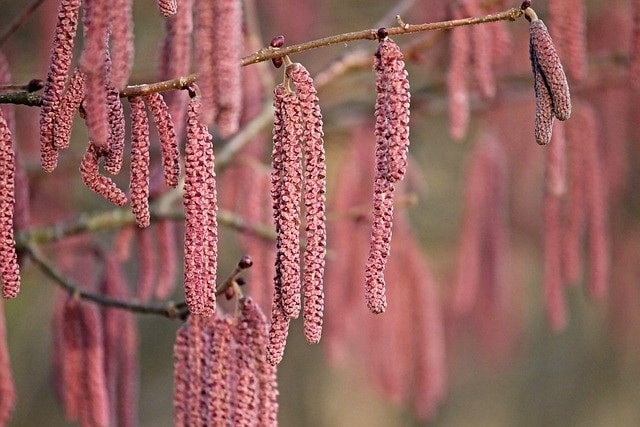
The hot dog looking plant, also known as southern cattail (Typha domingensis), is a freshwater marsh plant with tall, stiff, grass-like leaves and hotdog-on-a-stick flowers. These plants can grow up to 10 feet tall and are primarily found in East Basin and in places west of the freeway near local fresh water sources [1].
Cattails have specialized internal tissues that allow direct transfer of air between leaves and roots, making them an important part of the ecosystem in marshes and wetlands.
The plants are monoecious, with unisexual flowers that develop in dense racemes [4]. The male flowers are located at the top of the flowering spike, while the female flowers are located below the male flowers [1].
Southern cattails are not succulent plants, but rather herbaceous perennials that can spread through stem cuttings or wind-blown seeds [3]. They are often confused with common cattails (Typha latifolia) which have a thicker flowering spike and are more commonly found in northern regions.
The hot dog looking plant is not related to the corn dog or any type of food, nor is it related to the hot dog cactus or candle plant. The plants are not commonly grown as ornamentals, but they can be used for erosion control and water filtration in wetland restoration projects [1].
Growing Conditions
Hot dog looking plants are succulents that are relatively easy to care for. They can be grown both indoors and outdoors, depending on the climate. In this section, we will discuss the growing conditions required for hot dog looking plants to thrive.
1. Sunlight
Hot dog looking plants require bright, indirect sunlight to grow. They can tolerate some direct sunlight, but too much can scorch the leaves. If the plant is not getting enough light, it may become leggy and lose its shape. Therefore, it is essential to place the plant in a location where it can receive enough sunlight.
2. Freshwater
Hot dog looking plants are drought-tolerant and do not require frequent watering. Overwatering can cause root rot and kill the plant. It is best to water the plant when the soil is completely dry. The frequency of watering will depend on the climate and the size of the pot. In general, it is better to underwater than overwater the plant.
3. Temperature

Hot dog looking plants prefer warm temperatures and cannot tolerate frost. They can be grown outdoors in USDA hardiness zones 9 to 11. In colder climates, they can be grown indoors in a sunny window. The ideal temperature range for hot dog looking plants is between 60°F to 80°F (15°C to 27°C).
4. Partial Shade
Hot dog looking plants can tolerate partial shade and can be grown in areas with less sunlight. However, they require at least 4 hours of sunlight per day to grow properly. If the plant is not getting enough light, it may become leggy and lose its shape.
Planting and Germination
Planting and germination are essential steps in growing hot dog looking plants. The following paragraphs will provide information on how to plant and germinate these plants successfully.
1. Seeds
Hot dog looking plants can be grown from seeds. It is important to use fresh seeds as they have a higher germination rate. Seeds should be sown in well-draining soil, such as loam, in containers that are at least 6 inches deep. The seeds should be covered with a layer of soil that is equal to their size.
2. Germination
Hot dog looking plants require warm temperatures for germination. The optimal temperature range for germination is between 70-80°F. The seeds should be kept moist but not waterlogged during germination. It is important to keep the soil consistently moist but not soaking wet. Germination can take up to 2-3 weeks.
3. Rhizomes
Hot dog looking plants can also be grown from rhizomes. Rhizomes are underground stems that produce new plants.
To grow hot dog looking plants from rhizomes, the rhizomes should be planted in well-draining soil, such as loam, and covered with a layer of soil that is equal to their size. The soil should be kept moist but not waterlogged.
4. Containers
Hot dog looking plants can be grown in containers. Containers should be at least 6 inches deep and have drainage holes. The soil should be well-draining, such as loam, and mixed with gravel and peat moss to improve drainage. Containers should be placed in a sunny location and watered regularly.
Maintenance and Care
Hot dog looking plants, also known as Candle Plants or Sausage Plants, are a type of succulent that requires minimal maintenance. However, proper care is still necessary to ensure the plant’s health and longevity.
1. Watering

Hot dog looking plants are drought-resistant and can store water in their leaves and stems. Overwatering can lead to root rot, which can be fatal to the plant. It is recommended to wait until the soil is completely dry before watering.
During the dormant season, which is typically in the winter months, the plant requires even less water.
2. Dormant Season
During the dormant season, hot dog looking plants may appear to be dying, but they are simply conserving energy. It is important to reduce watering during this time to prevent overwatering and root rot. The plant will begin to grow again once the weather warms up.
3. Plants That Look Like Corn Dogs
Hot dog looking plants are often confused with other plants that have a similar appearance, such as the corn dog plant. While these plants may look similar, they have different care requirements. It is important to properly identify the plant before caring for it.
4. Gardening
Hot dog looking plants can be grown indoors or outdoors. When grown indoors, they require bright, indirect sunlight and well-draining soil. When grown outdoors, they prefer partial shade and a temperature that does not drop below 7°C (45°F). It is important to protect the plant from frost and extreme temperatures.
Potential Threats and Diseases
Like any other plant, hot dog cacti are susceptible to several threats and diseases. Being aware of these potential issues is crucial for the plant’s survival.
1. Rot
One of the most common issues that hot dog cacti face is rot. Overwatering or poor drainage can cause the roots to rot, leading to the plant’s death. It is essential to ensure that the soil is well-draining and not watered excessively.
If rot is detected, it is best to remove the affected parts of the plant and repot it in fresh, well-draining soil.
2. Invasive
Hot dog cacti are not invasive plants, meaning they do not pose a significant threat to the environment. However, if not grown in a controlled environment, they can spread and take over other plants’ space.
3. Toxicity
Hot dog cacti are not toxic to humans or pets. However, the plant’s spines can cause injury if not handled carefully. It is essential to wear gloves when handling the plant to avoid any accidents.
4. Diseases
Hot dog cacti are susceptible to several diseases, including fungal infections and bacterial diseases. These diseases can cause discoloration of the plant, wilting, and stunted growth. It is crucial to identify the disease and treat it immediately to prevent further damage to the plant.
5. Spider Mites

Spider mites are one of the most common pests that hot dog cacti face. These tiny insects can cause discoloration of the plant and damage the leaves. It is essential to identify the infestation early and treat it with insecticidal soap or neem oil.
Ecological and Nutritional Importance
Hot dog cactus, also known as candle plant or sausage plant, is a perennial and evergreen succulent that is popular among succulent enthusiasts. This plant is cylindrical in shape, which is why it is often referred to as hot dog cactus.
From an ecological perspective, hot dog cactus is an important plant in arid and semi-arid regions. It is drought-tolerant and can survive in harsh environments where other plants cannot.
This makes it an essential plant for wildlife, as it provides a source of food and shelter for various animals, including birds, insects, and small mammals.
In terms of nutritional importance, hot dog cactus is not a significant source of protein. However, it is rich in fiber, vitamins, and minerals, making it a healthy addition to one’s diet.
The plant contains high levels of vitamin C, which is essential for maintaining a healthy immune system, and calcium, which is important for maintaining strong bones.
Hot dog cactus is also low in calories and fat, making it an ideal food for those who are trying to lose weight or maintain a healthy diet. It is often used in salads, stir-fries, and other dishes, and can be eaten raw or cooked.
Unusual Varieties
Hot dog looking plants come in a variety of shapes and sizes, and some are more unusual than others. Here are a few examples of unusual hot dog looking plants:
- Narrowleaf Cattail: This cattail variety has long, slender leaves that resemble hot dogs. It grows in marshy areas and can tolerate higher salinity levels than other cattail species.
- Graceful Cattail: This cattail variety has a more delicate appearance than other cattails. Its hot dog-shaped leaves are thinner and more flexible, and it has a more graceful overall shape.
- Miniature Cattail: As its name suggests, this cattail variety is smaller than other cattails. Its hot dog-shaped leaves are shorter and more compact, and it grows well in small ponds and containers.
- Poison Iris: This plant is not actually a hot dog looking plant, but its leaves have been known to resemble hot dogs. However, it should be noted that this plant is highly toxic and should not be consumed.
- Punks: This succulent plant has cylindrical leaves that resemble hot dogs. Its leaves are covered in small, white dots that give it a unique appearance.
- Senecio Articulatus: Also known as the Candle Plant or Hot Dog Cactus, this plant has long, green cylindrical leaves that resemble hot dogs. It is a member of the Asteraceae (Compositae) family and is native to South Africa.
- Corn Dog Plant: This plant has long, thin leaves that resemble hot dogs on a stick. It is a great way to add interest to a garden, and it can be found at most nurseries or online retailers.
- Dwarf Cattail Species: This cattail variety is smaller than other cattails and has hot dog-shaped leaves that are shorter and more compact. It is a great choice for small ponds and containers.
- Marsh Plants: There are many different types of marsh plants that have leaves that resemble hot dogs. These plants are typically found in wetland areas and can add a unique touch to any garden.
Family and Genus
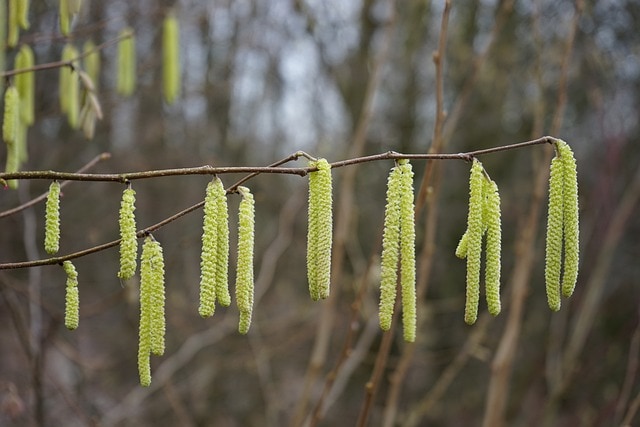
The hot dog looking plant belongs to the Asteraceae family, which is also known as the Compositae family. This family is one of the largest families of flowering plants, with over 32,000 species. The family is characterized by its composite flower heads, which are made up of many small flowers arranged in a dense cluster.
The hot dog looking plant is a member of the Senecio genus within the Asteraceae family. The genus Senecio includes over 1,250 species of plants, which are commonly known as groundsel, ragwort, and dusty miller.
The hot dog looking plant is also known as the Candle Plant or Hot Dog Cactus, and its scientific name is Senecio articulatus.
The hot dog looking plant is native to South Africa, where it grows in rocky areas and on slopes. It is a succulent plant that stores water in its leaves, which are cylindrical and segmented, resembling a hot dog. The plant can grow up to 3 feet tall and produces yellow flowers in the summer.
Another family that is relevant to the hot dog looking plant is the Typhaceae family. This family includes about 30 species of monocotyledonous flowering plants, which are commonly known as bulrush or reedmace.
The plants in this family have long, narrow leaves and produce a dense, cylindrical flower spike that resembles a hot dog. However, the hot dog looking plant is not a member of the Typhaceae family, but rather the Asteraceae family.
Culinary and Taste Profile
The taste of hot dog cactus is not edible and it is not recommended to consume it. The plant is grown for its ornamental value and is a popular houseplant among succulent enthusiasts. The cylindrical shape of the plant has earned it the nickname “candle plant” or “sausage plant.”
While there are plants that look like corn dogs, such as the cattail plant, they are not related to the hot dog cactus. Cattail is edible and has a taste similar to a bitter cucumber. It is high in fiber and low in calories, making it a good choice for those looking to add more greens to their diet.
In recent years, there has been an increase in the popularity of vegan hot dogs and sausages. Plant-based dogs have come a long way in the past decade, with many options now available that are indistinguishable from their meat-based counterparts.
However, taste remains the ultimate barrier for widespread adoption of plant-based hot dogs. Continued innovation and culinary mastery will be necessary to create plant-based alternatives that are as delicious as meat-based versions.
Nathan’s Famous, known for its hot dogs, has even entered the vegan market by partnering with the company Meatless Farm to create a vegan option.
According to Mark Thompson, a food blogger, YouTuber, and author of the book “Making Vegan Meat: The Plant-Based Food Science,” plant-based dogs have come a long way in the past 10 years.
Winter Care
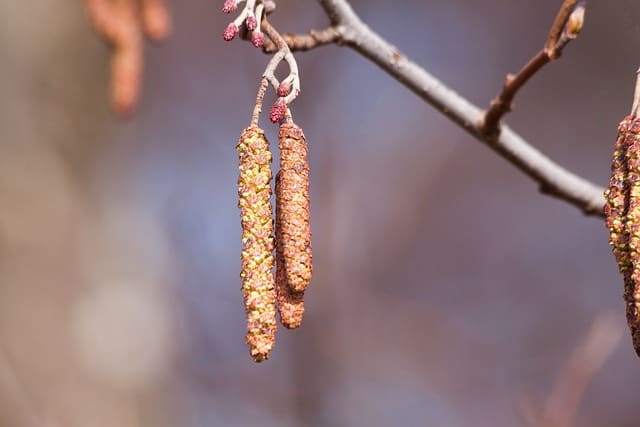
The Hot Dog Cactus plant is a low-maintenance succulent that requires minimal care during the winter months. It is a hardy plant that can tolerate low temperatures, but it is important to take some precautions to ensure that it stays healthy during the cold season.
One of the most important things to keep in mind during the winter is that the Hot Dog Cactus does not require as much watering as it does during the summer. Overwatering during the winter can lead to root rot, which can be fatal for the plant. It is recommended to water the plant only when the soil is completely dry.
Another important aspect of winter care for the Hot Dog Cactus is providing it with sufficient sunlight. During the winter months, the days are shorter and the sun is not as strong, so it is important to place the plant in a location where it can receive as much sunlight as possible.
If the plant is kept indoors, it should be placed near a window that receives direct sunlight for several hours a day.
It is also important to protect the Hot Dog Cactus from extremely cold temperatures. While it can tolerate low temperatures, it should not be exposed to temperatures below freezing for extended periods of time.
If the plant is kept outdoors, it should be covered with a frost cloth or moved to a sheltered location during periods of extreme cold.
Finally, it is important to keep an eye out for pests and diseases during the winter months. The Hot Dog Cactus is susceptible to mealybugs, spider mites, and other pests, which can cause damage to the plant if left untreated.
If any signs of pests or diseases are observed, it is important to take action immediately to prevent further damage to the plant.
Adaptation to Different Soil Types
Hot dog looking plants, also known as Senecio articulatus, are succulent plants that are native to South Africa. These plants are known for their cylindrical shape, which resembles a hot dog, and their ability to adapt to different soil types.
One of the ways that hot dog looking plants have adapted to different soil types is by developing a deep root system. This allows them to reach nutrients and water that may be deeper in the soil. Additionally, hot dog looking plants are able to store water in their leaves, which helps them survive in areas with low rainfall.
Hot dog looking plants are also able to adapt to sandy soil. These plants have evolved to grow in areas with sandy soil by developing a root system that is able to hold onto the soil. This helps prevent the plant from being uprooted by strong winds or heavy rain.
In addition, hot dog looking plants are able to tolerate soil with high salinity levels. They are able to do this by developing a mechanism that allows them to excrete excess salt through their leaves. This helps prevent the plant from being damaged by the salt.
Frequently Asked Questions

What is the plant that resembles a corn dog?
The plant that resembles a corn dog is commonly known as the “hot dog cactus” or “candle plant.” It is a succulent plant that has a cylindrical shape and is often used as a houseplant.
What is the nickname for a plant that looks like a corndog?
The nickname for a plant that looks like a corndog is “hot dog plant.” This name is often used to refer to the hot dog cactus or candle plant.
What is the marsh plant that looks like a corn dog?
The marsh plant that looks like a corn dog is called the “cattail.” Cattails are found in wetlands and have a brown cylindrical spike that resembles a corn dog.
What are some plants that resemble hot dogs?
In addition to the hot dog cactus, there are several other plants that resemble hot dogs. One of these is the “sausage tree,” which is native to Africa and has long, sausage-shaped fruits. Another is the “hot dog tree,” which is found in South America and has red, sausage-shaped fruits.
What are some plants that resemble corn?
Plants that resemble corn include the “corn plant” and “cornflower.” The corn plant, also known as Dracaena fragrans, has long, green leaves that resemble corn leaves. The cornflower, also known as Centaurea cyanus, has a bright blue flower that resembles a corn kernel.
What is the fluffy substance found on cattails used for?
The fluffy substance found on cattails is called “cattail down” or “cattail fluff.” It is used by birds to line their nests and by humans to make insulation, pillows, and other soft goods. It can also be used as a fire starter or as a natural filter for water.

Hey, I’m Lisa and I’ve been an avid gardener for over 30 years. I love writing, talking and living in the garden! Feel free to connect with me on my socials below

